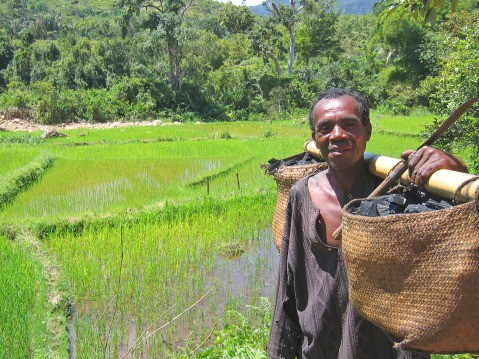A recent report, Building on Local Dynamics: 5 Policy Recommendations for Enhancing Innovation by African Smallholder Farmers, traces the pathways of innovation with the goal of understanding catalysts for change and how to sustain it. The report, available through the Global Forum on Agriculture Research (GFAR), is a product of “African and European partners in the EU-funded project on Joint Learning in Innovation Systems in African Agriculture” (JOLISAA), and is the culmination of research conducted from 2010-2013.
By following the introduction and development of technology, the report traces the “ongoing, collective, interactive and multi-faceted innovation process that involves continuous adaptation to new conditions.” Five main recommendations are listed to better understand and promote the use of innovation on smallholder farms.
The first of these recommendations includes, “building on innovation,” which takes into consideration the ever changing environmental and market factors that smallholder farmers constantly face and, in turn, must meet the demands of innovation. JOLISSA notes that “many such initiatives take place ‘under the radar,’” making local innovation, for the most part, stay local. An opportunity to widen the knowledge of new techniques and new approaches to technology is, therefore, consistently missed.
The second suggestion calls for the “combination of local and external knowledge and ideas to enhance innovative capacity.” Building on the first recommendation, JOLISAA uses the case study of Beninese farmers that create ponds – trapping fish when river waters recede – as a prime example. Connecting these farmers to “external knowledge,” includes advising them on plant and animal disease and providing fingerlings, fortifying a localized approach to food security and “improved capacity and potential of all involved to address ongoing or emerging challenges and opportunities.”
“Encouraging access to diverse value chains to lower the innovation risks,” is the third recommendation with the goal to insulate farmers from market risk by relying on more than one “product, buyer, or market.” JOLISSA calls on policymakers to provide infrastructure, credit opportunities, and consistent standards and regulations, to help farmers acclimate themselves to new markets and be better protected from market variations.
The fourth recommendation to “support unpredictable innovation processes,” takes into account the inherent unpredictability of innovation. Citing multiple examples seen over the three year study, including the repurposing of soybeans from baby food to cash crop in Benin and sorghum from large-scale production to a key component of local food security in Kenya, JOLISSA makes the point that innovation often follows its own course and new methods should be supported and encouraged even if it deviates from the original plan.
Finally, “addressing multiple dimensions of innovation,” takes into account the “social and organisational dimensions” that are instrumental in the development and repurposing of technology. The report indicates the need for both government and institutions to be understanding of this relationship and to support changes that will allow innovation to flourish.















